Diving with Grey Nurse Sharks… Any underwater encounter with any large creature is an exciting experience. But their size and physical presence makes diving with Australian Grey Nurse sharks truly memorable!

Most of my experience with Australian Grey Nurse sharks has been in the cave at Magic Point near Maroubra in Sydney. Typically you are not allowed to enter the cave because of the potential impact on the sharks.
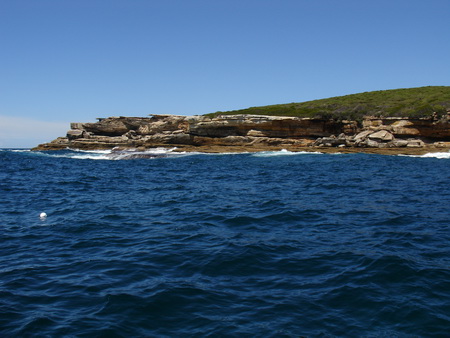
However in the process of getting the images for this site and my articles on the Grey Nurse. And, after being extensively coached on what and what not to do, I was fortunate to be allowed to spend a reasonable amount of time in there.
The cave is a special place… It’s basically where the sharks “hang out” during the day.
Grey Nurse hunt and feed at night, when we have no real way of observing them when they most active.
Instead we encounter them during the day. When they like to hang out in gutters, caves and overhangs to shelter from prevailing currents and potential predators.
Observed this way they seem completely docile. Almost kind of dumb as they patrol slowly round and round in an apparently aimless fashion. But the reality is they are resting and have slowed their metabolism right down to conserve energy. Basically they are almost sleep-walking, or should that be sleep-swimming?
Grey Nurse Sharks – Code of Conduct
When in this passive mode Grey Nurse establish swimming patterns that keep them away from each others “personal space”.
So the presence of a diver and the inevitable curtain of bubbles can disturb that pattern. It will also stress the sharks and probably drive them away from the area. In a confined area like the cave at Magic Point, multiple divers entering it is certain to impact the swimming pattern and is a really bad idea.
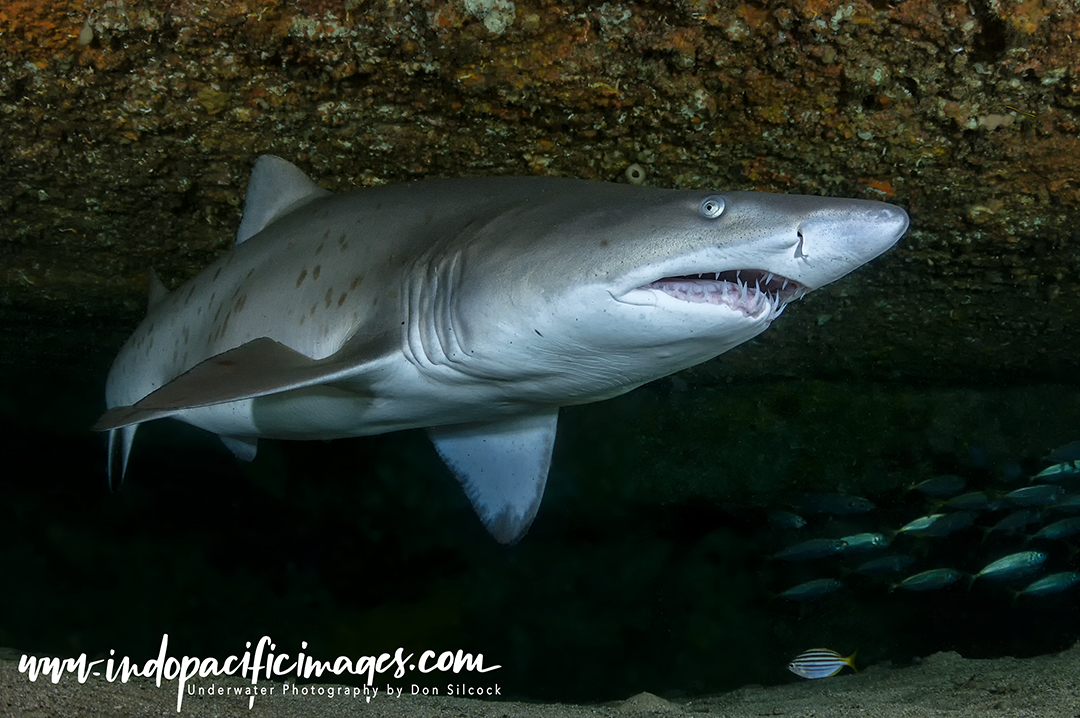
A lone diver with a slow and cautious approach can enter the cave area from either end. Minimizing the impact on the sharks and giving them plenty of time to adjust their swimming patterns.
Clear signs of stress are changes in breathing rate – indicated by gaping of their mouths and the speed at which they flick their tails.
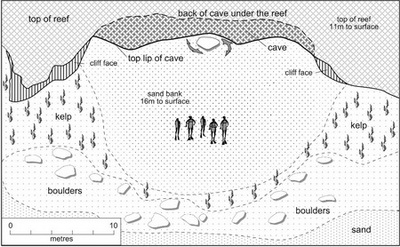
The two are strongly linked because an unstressed Grey Nurse swims in a relaxed manner at a rate that provides enough oxygenated water through its mouth and over its gills.
A stressed shark on the other hand has to move faster to increase the flow of water through the gills and tends to “gape” its mouth to boost the overall oxygenation effect.
The stress threshold is around 24 tail flicks per minute. But the shark’s overall “body language” is a sure sign that they are becoming stressed. If you observe that behavior, take it as your cue to back off and leave them alone.
Not that you are in any significant danger, but after all they are a big creature and common sense should prevail…
Photographing Grey Nurse at Magic Point
Patience and preparation are probably the two most important factors associated with getting decent images of the Grey Nurse. It took me a lot of dives at Magic Point before I finally got some publishable photographs.
Visibility at Magic Point is rarely very good in my experience and a “good day” is around 15m, but often it is less than 10m. As with all underwater photography, Rule #1 is get close and Rule #2 is get closer… Which at Magic Point is not always possible because of the rules about not going in the cave.
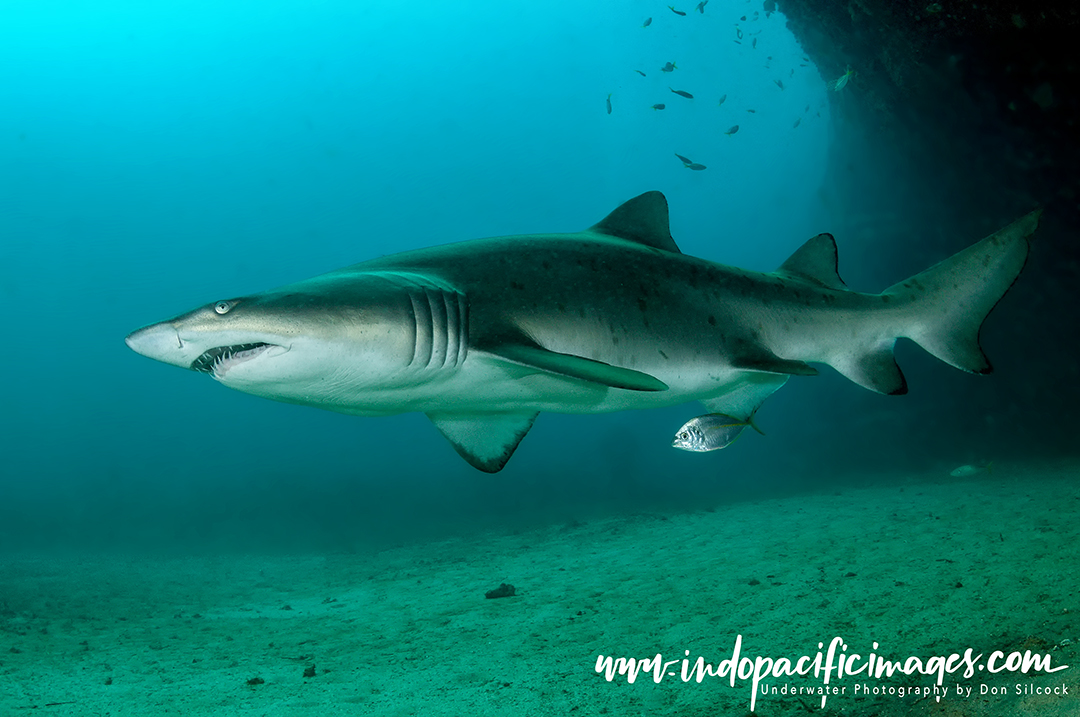
This is where the patience comes in… You need to position yourself along the wall at either end of the cave and assume a non-threatening posture. Settle your breathing rate down so that you are not making too much noise. And then wait for the sharks to come to you – which they usually will.
Then you need to be prepared with your strobe (or strobes..) extended as far out & back from the camera to minimize backscatter. A shutter speed of at least 1/200 of a second because the sharks are moving objects. Your f stop should be open enough to allow adequate light for the background exposure. And finally the power of your strobes adjusted to light the shark.
Composure should place the shark in its environment. The focus point should be the eye, as we are always drawn to the eye of any creature. But particularly so with large sharks… so the eye needs to be tack sharp!
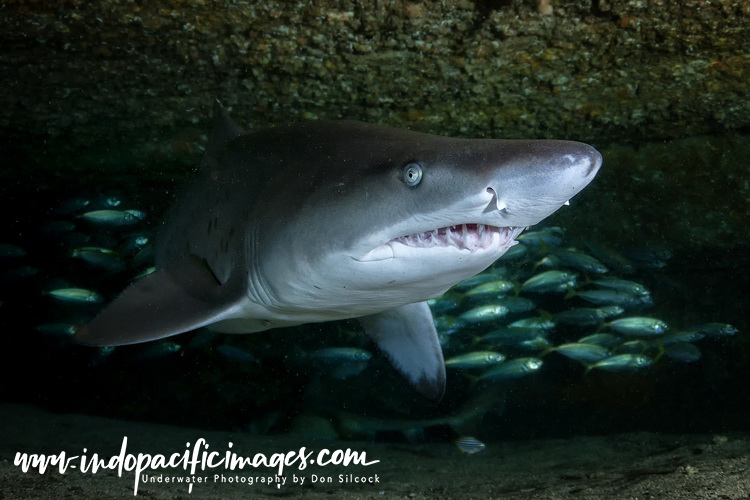
Diving with Grey Nurse Sharks – NSW
- Solitary Islands near Coffs Harbor – www.jettydive.com.au & www.divequest.com.au
- Julian Rocks near Byron Bay – www.sundive.com.au & www.byronbaydivecentre.com.au
- Green Island near South West Rocks – www.southwestrocksdive.com.au & www.fishrock.com.au
- Fish Rock near South West Rocks – www.southwestrocksdive.com.au & www.fishrock.com.au
- The Pinnacle near Forster – www.forsterdivecentre.com.au & www.diveforster.com.au
- Big Seal and Little Seal at Seal Rocks – www.forsterdivecentre.com.au & www.diveforster.com.au
- Little Broughton Island near Port Stephens – www.feetfirstdive.com.au
- Magic Point at Maroubra – www.prodivesydney.com & www.frogdive.com.au
- Bass Point near Shellharbour – www.shellharbourscuba.com.au
- Jervis Bay – www.oceantrek.com.au, www.crestdiving.com.au, & www.divejervisbay.com
- The Tollgate Islands at Batemans Bay – www.indpethscuba.com.au
Diving with Grey Nurse Sharks – Queensland
- Wolf Rock near Rainbow Beach – www.wolfrockdive.com.au
- Flat Rock near Stradbroke Island – www.mantalodge.com.au
Back To: Australian Grey Nurse Guide
